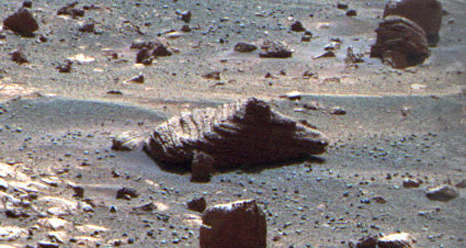The Mars Exploration Rover Opportunity deployed by NASA has discovered traces of mineral deposits on the surface of Mars. The mineral deposits are mostly gypsum which was deposited by water. Through analysis of the nature of mineral deposits, the background of wet environments on Mars can be better understood.
 Surface of Mars
Surface of Mars
The principal investigator for Opportunity, Steve Squyres from Cornell University explained that the discovery of mineral traces is an indication that water had flowed underground in the fissures in the rocks on Mars. Gypsum deposits have been found in other places on Mars by Opportunity prior to this discovery but these deposits are purely chemical in nature. It is quite rare that deposits of this nature are found on Mars, it is a significant discovery that kindles the interest of geologists.
The details of the discovery were presented at a conference of the American Geophysical Union at San Francisco. The mineral vein spans a width of 0.4 to 0.8 in. and 16 to 20 in. in length and protrudes out on either side of the bedrock. The mineral veins are spread like an apron surrounding the rim of the Endeavour Crater. In order to have a better view of the mineral veins the NASA researchers installed a microscopic imager and Alpha particle X-Ray spectrometer on the rover’s arm and placed multiple filters on the panoramic camera located on the mast of the rover. The team was able to locate plenty of calcium and sulfur, which indicated presence of calcium sulfate on the deposits. The panoramic camera revealed the presence of gypsum, hydrated form of calcium sulfate in the deposits. The uniqueness of these mineral veins lies in the location where it is found, these are found right in the location where they were formed. The researchers assume that deposits of this nature are usually formed from water when it dissolves calcium present on the rocks at near neutral conditions rather than acidic conditions. The team is further investigating these deposits for their apron-like structure and their location.
Opportunity and its twin have been on the Mars mission since April 2004. In 2010 the communication from the twin explorer was disrupted, from then onwards only Opportunity continued to communicate.